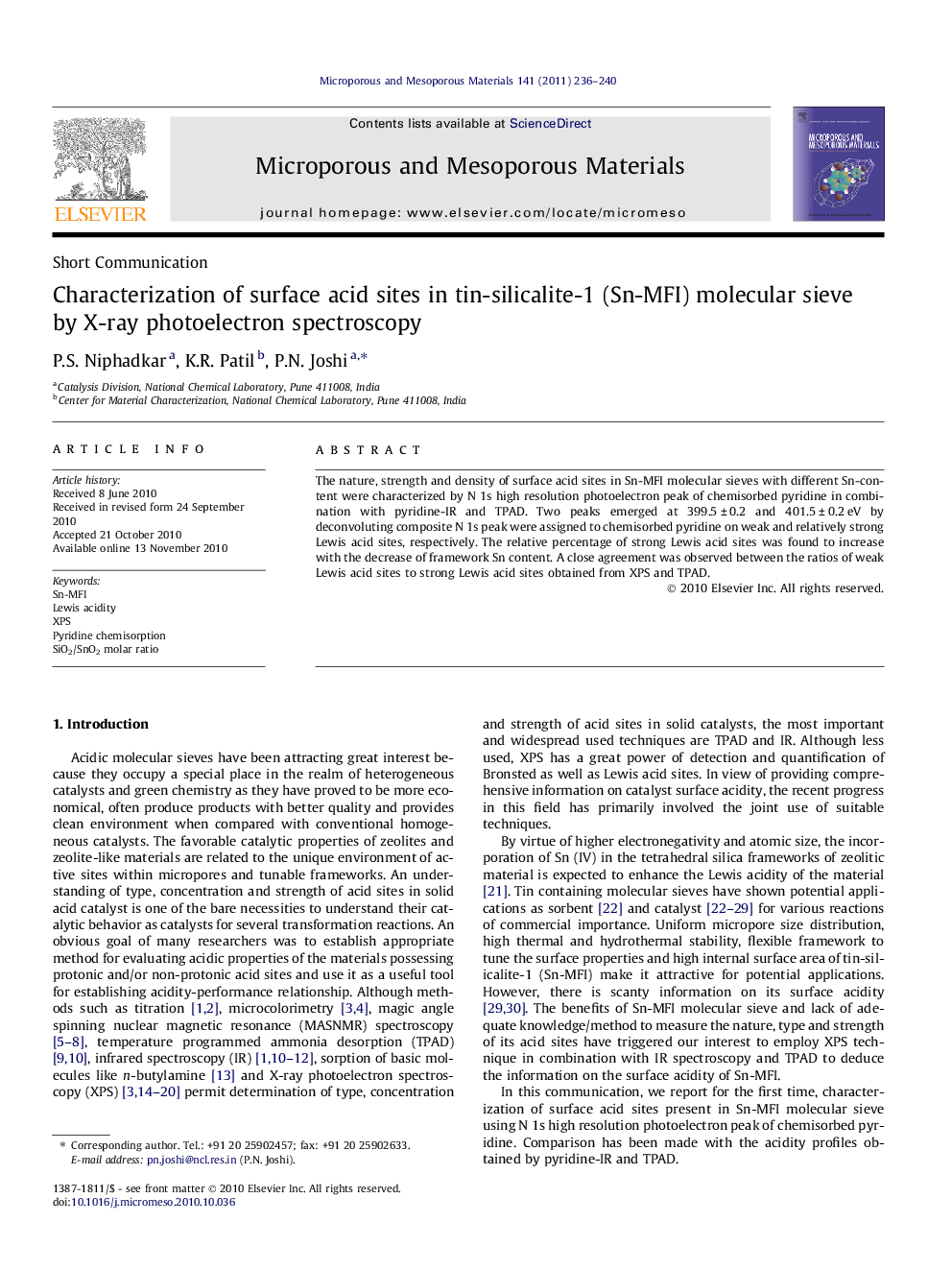| Article ID | Journal | Published Year | Pages | File Type |
|---|---|---|---|---|
| 75446 | Microporous and Mesoporous Materials | 2011 | 5 Pages |
The nature, strength and density of surface acid sites in Sn-MFI molecular sieves with different Sn-content were characterized by N 1s high resolution photoelectron peak of chemisorbed pyridine in combination with pyridine-IR and TPAD. Two peaks emerged at 399.5 ± 0.2 and 401.5 ± 0.2 eV by deconvoluting composite N 1s peak were assigned to chemisorbed pyridine on weak and relatively strong Lewis acid sites, respectively. The relative percentage of strong Lewis acid sites was found to increase with the decrease of framework Sn content. A close agreement was observed between the ratios of weak Lewis acid sites to strong Lewis acid sites obtained from XPS and TPAD.
Graphical abstractThe surface acid sites in Sn-MFI molecular sieves with different Sn-content were characterized by N 1s high resolution photoelectron peak of chemisorbed pyridine. Two peaks emerged at 399.5 ± 0.2 and 401.5 ± 0.2 eV by deconvoluting N 1s peak were assigned to chemisorbed pyridine on weak and relatively strong Lewis acid sites, respectively. The intensities of these two components were found to decrease with the increase of Si/Sn atomic ratio. The ratios of weak Lewis acid sites to strong Lewis acid sites obtained from XPS match well with that of obtained by TPAD.Figure optionsDownload full-size imageDownload as PowerPoint slideResearch highlights► The surface acid sites in Sn-MFI molecular sieves with different Sn-content were characterized by N 1s high resolution photoelectron peak of chemisorbed pyridine in combination with pyridine-IR and TPAD. ► Two peaks emerged at 399.5 ± 0.2 and 401.5 ± 0.2 eV by deconvoluting composite N 1s peak were assigned to chemisorbed pyridine on weak and relatively strong Lewis acid sites, respectively. ► The intensities of these two components of composite N 1s peak were found to decrease with the increase of Si/Sn atomic ratio. ► The ratios of weak Lewis acid sites to strong Lewis acid sites obtained from XPS match well with that of obtained by TPAD. ► Minimum two different types of framework Sn sites are expected in Sn-MFI molecular sieves and might be attributed to the partially hydrolyzed and nonhydrolyzed framework Sn sites.
